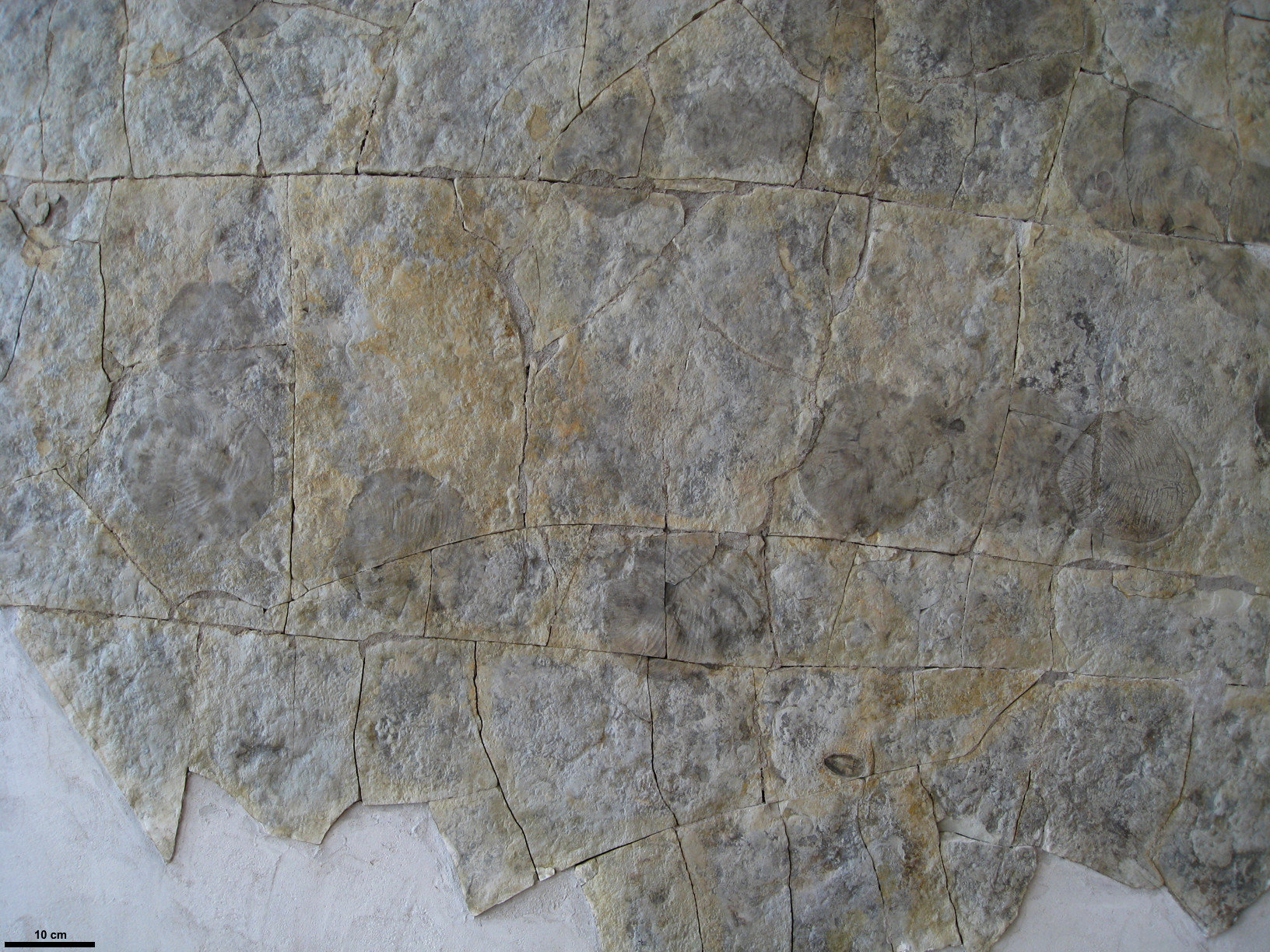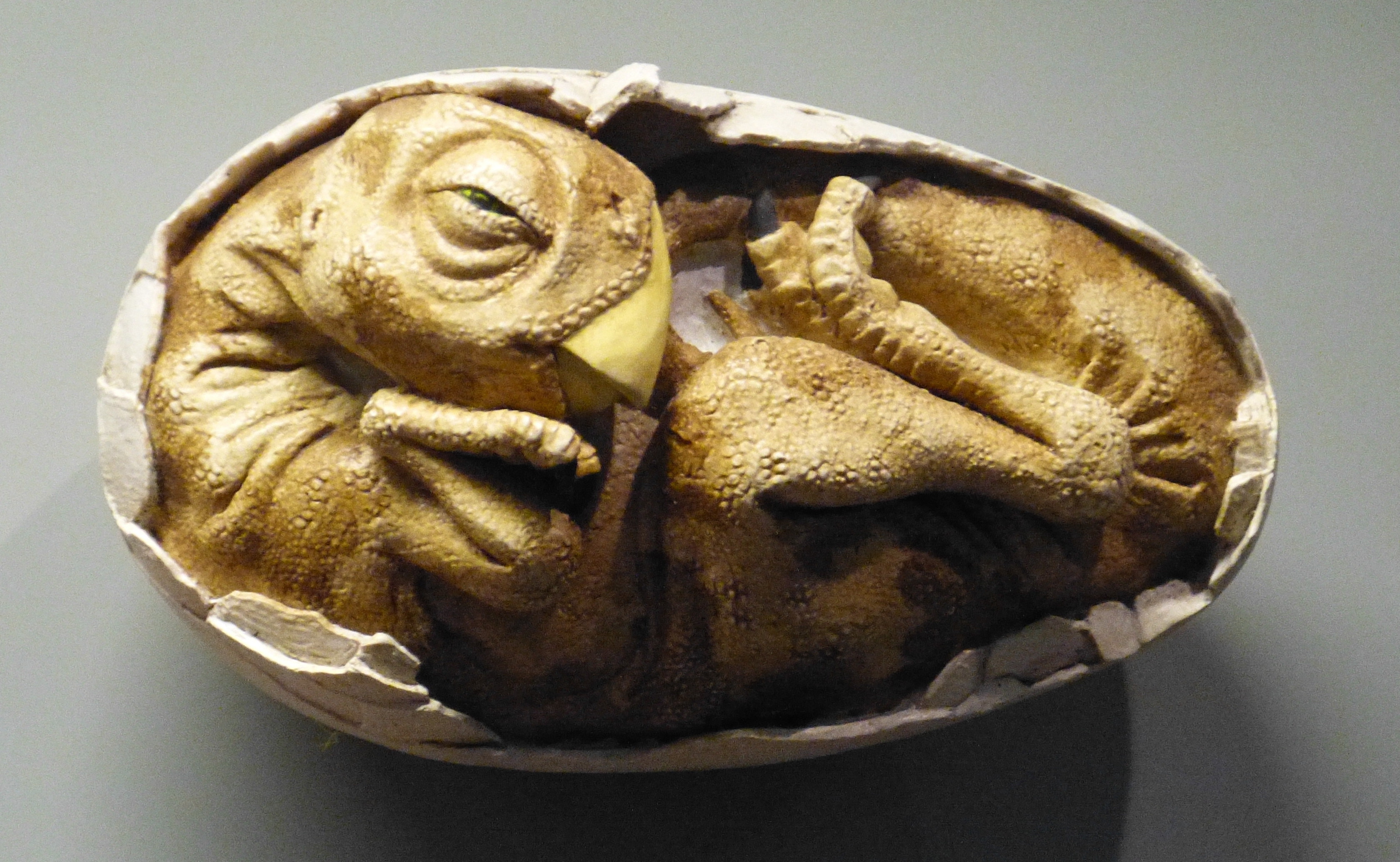|
Youngoolithus
''Youngoolithus'' is an oogenus of dinosaur egg.Carpenter, K. 1999. Eggs, Nests, and Baby Dinosaurs: A Look at Dinosaur Reproduction (Life of the Past). Indiana University Press, Bloomington, Indiana. It is the sole member of the oofamily Youngoolithidae, and consists of a single oospecies: ''Youngoolithus xiaguanensis''. It consists of a single fossil nest of 16 eggs with an associated dinosaur footprint that was first discovered in 1975 in the Majiacun Formation near Houzhuang Village, Henan Province, in the Cretaceous The Cretaceous ( ) is a geological period that lasted from about 145 to 66 million years ago (Mya). It is the third and final period of the Mesozoic Era, as well as the longest. At around 79 million years, it is the longest geological period of th ... Xiaguan Basin. The eggs are smooth, olive-shaped, and arranged in five rows. It was originally described as being a Faveoloolithid egg, however the nest is arranged quite differently than other members of that fam ... [...More Info...] [...Related Items...] OR: [Wikipedia] [Google] [Baidu] |
Majiacun Formation
The Majiacun Formation is a Santonian to Coniacian geologic formation in China. * '' Zhanghenglong, Zhanghenglong yangchengensis''Xing et al., 2014 * Baryonychinae indet.? (possibly an indeterminate theropod due to no shared synapomorphies present)Hone et al., 2010 ;Fossil eggs * '' Dendroolithus sanlimiaoensis''Zhou & Feng, 2002 * ''Prismatoolithus gebiensis''Liang et al., 2009 * '' Ovaloolithus sp.'' * '' Spheroolithus sp.''Zhao, 1979 * '' Nanyangosaurus zhugeii'' * '' Youngoolithus xiaguanensis'' ;Ichnofossils * '' Scoyenia sp.'' See also * List of dinosaur-bearing rock formations ** List of stratigraphic units with few dinosaur genera References Bibliography * * * * * * * * * {{cite LSA , last=Zhao , first=Z , year=1979 , title=Discovery of the dinosaurian eggs and footprint from Neixiang county, Henan province , journal=Vertebrata PalAsiatica The Institute of Vertebrate Paleontology and Paleoanthropology (IVPP; ) of China is a research institution and ... [...More Info...] [...Related Items...] OR: [Wikipedia] [Google] [Baidu] |
Oogenus
Egg fossils are the fossilized remains of eggs laid by ancient animals. As evidence of the physiological processes of an animal, egg fossils are considered a type of trace fossil. Under rare circumstances a fossil egg may preserve the remains of the once- developing embryo inside, in which case it also contains body fossils. A wide variety of different animal groups laid eggs that are now preserved in the fossil record beginning in the Paleozoic. Examples include invertebrates like ammonoids as well as vertebrates like fishes, possible amphibians, and reptiles. The latter group includes the many dinosaur eggs that have been recovered from Mesozoic strata. Since the organism responsible for laying any given egg fossil is frequently unknown, scientists classify eggs using a parallel system of taxonomy separate from but modeled after the Linnaean system. This "parataxonomy" is called ''veterovata''. History The first named oospecies was '' Oolithes bathonicae'', a name given provisi ... [...More Info...] [...Related Items...] OR: [Wikipedia] [Google] [Baidu] |
Dinosaur Egg
Dinosaur eggs are the organic vessels in which a dinosaur embryo develops. When the first scientifically documented remains of non-avian dinosaurs were being described in England during the 1820s, it was presumed that dinosaurs had laid eggs because they were reptiles. In 1859, the first scientifically documented dinosaur egg fossils were discovered in France by Jean-Jacques Poech, although they were mistaken for giant bird eggs (birds were not yet recognized as dinosaurs at the time). The first scientifically recognized non-avian dinosaur egg fossils were discovered in 1923 by an American Museum of Natural History crew in Mongolia. Dinosaur eggshell can be studied in thin section and viewed under a microscope. The interior of a dinosaur egg can be studied using CAT scans or by gradually dissolving away the shell with acid. Sometimes the egg preserves the remains of the developing embryo inside. The oldest known dinosaur eggs and embryos are from ''Massospondylus'', which lived ... [...More Info...] [...Related Items...] OR: [Wikipedia] [Google] [Baidu] |
Oofamily
Egg fossils are the fossilized remains of eggs laid by ancient animals. As evidence of the physiological processes of an animal, egg fossils are considered a type of trace fossil. Under rare circumstances a fossil egg may preserve the remains of the once- developing embryo inside, in which case it also contains body fossils. A wide variety of different animal groups laid eggs that are now preserved in the fossil record beginning in the Paleozoic. Examples include invertebrates like ammonoids as well as vertebrates like fishes, possible amphibians, and reptiles. The latter group includes the many dinosaur eggs that have been recovered from Mesozoic strata. Since the organism responsible for laying any given egg fossil is frequently unknown, scientists classify eggs using a parallel system of taxonomy separate from but modeled after the Linnaean system. This "parataxonomy" is called ''veterovata''. History The first named oospecies was '' Oolithes bathonicae'', a name given provisi ... [...More Info...] [...Related Items...] OR: [Wikipedia] [Google] [Baidu] |
Late Cretaceous
The Late Cretaceous (100.5–66 Ma) is the younger of two epochs into which the Cretaceous Period is divided in the geologic time scale. Rock strata from this epoch form the Upper Cretaceous Series. The Cretaceous is named after ''creta'', the Latin word for the white limestone known as chalk. The chalk of northern France and the white cliffs of south-eastern England date from the Cretaceous Period. Climate During the Late Cretaceous, the climate was warmer than present, although throughout the period a cooling trend is evident. The tropics became restricted to equatorial regions and northern latitudes experienced markedly more seasonal climatic conditions. Geography Due to plate tectonics, the Americas were gradually moving westward, causing the Atlantic Ocean to expand. The Western Interior Seaway divided North America into eastern and western halves; Appalachia and Laramidia. India maintained a northward course towards Asia. In the Southern Hemisphere, Australia and Ant ... [...More Info...] [...Related Items...] OR: [Wikipedia] [Google] [Baidu] |
Dinosaur Footprint
A fossil track or ichnite (Greek "''ιχνιον''" (''ichnion'') – a track, trace or footstep) is a fossilized footprint. This is a type of trace fossil. A fossil trackway is a sequence of fossil tracks left by a single organism. Over the years, many ichnites have been found, around the world, giving important clues about the behaviour (and foot structure and stride) of the animals that made them. For instance, multiple ichnites of a single species, close together, suggest 'herd' or 'pack' behaviour of that species. Combinations of footprints of different species provide clues about the interactions of those species. Even a set of footprints of a single animal gives important clues, as to whether it was bipedal or quadrupedal. In this way, it has been suggested that some pterosaurs, when on the ground, used their forelimbs in an unexpected quadrupedal action. Special conditions are required, in order to preserve a footprint made in soft ground (such as an alluvial plain or a f ... [...More Info...] [...Related Items...] OR: [Wikipedia] [Google] [Baidu] |
Henan Province
Henan (; or ; ; alternatively Honan) is a landlocked province of China, in the central part of the country. Henan is often referred to as Zhongyuan or Zhongzhou (), which literally means "central plain" or "midland", although the name is also applied to the entirety of China proper. Henan is a birthplace of Han Chinese civilization, with over 3,200 years of recorded history and remained China's cultural, economic and political center until approximately 1,000 years ago. Henan Province is home to many heritage sites, including the ruins of Shang dynasty capital city Yin and the Shaolin Temple. Four of the Eight Great Ancient Capitals of China, Luoyang, Anyang, Kaifeng and Zhengzhou, are in Henan. The practice of tai chi also began here in Chen Jia Gou Village (Chen style), as did the later Yang and Wu styles. Although the name of the province () means "south of the ellowriver.", approximately a quarter of the province lies north of the Yellow River, also known as the H ... [...More Info...] [...Related Items...] OR: [Wikipedia] [Google] [Baidu] |
Cretaceous
The Cretaceous ( ) is a geological period that lasted from about 145 to 66 million years ago (Mya). It is the third and final period of the Mesozoic Era, as well as the longest. At around 79 million years, it is the longest geological period of the entire Phanerozoic. The name is derived from the Latin ''creta'', "chalk", which is abundant in the latter half of the period. It is usually abbreviated K, for its German translation ''Kreide''. The Cretaceous was a period with a relatively warm climate, resulting in high eustatic sea levels that created numerous shallow inland seas. These oceans and seas were populated with now- extinct marine reptiles, ammonites, and rudists, while dinosaurs continued to dominate on land. The world was ice free, and forests extended to the poles. During this time, new groups of mammals and birds appeared. During the Early Cretaceous, flowering plants appeared and began to rapidly diversify, becoming the dominant group of plants across the Earth b ... [...More Info...] [...Related Items...] OR: [Wikipedia] [Google] [Baidu] |
Faveoloolithidae
Faveoloolithidae is an oofamily of dinosaur eggs. It contains '' Faveoloolithus'', '' Hemifaveoloolithus'', ''Parafaveoloolithus'', and probably '' Sphaerovum''. However, unlike the other Faveoloolthids, ''Sphaerovum'' has compactituberculate ornamentation more similar to megaloolithids. Like Dictyoolithidae, the membrane and the calcareous part of the eggshell formed simultaneously instead of forming the membrane before the calcareous like modern birds.Z.-K. Zhao. (1994) "Dinosaur eggs in China:On the structure and evolution of eggshells." In K. Carpenter, K. F. Hirsch, and J. R. Horner (eds.), ''Dinosaur Eggs and Babies,'' Cambridge University Press, Cambridge. Cambridge. pp. 184–203. See also * List of dinosaur oogenera Egg fossils are the fossilized remains of eggs laid by ancient animals. As evidence of the physiological processes of an animal, egg fossils are considered a type of trace fossil. Under rare circumstances a fossil egg may preserve the remains of t ... ... [...More Info...] [...Related Items...] OR: [Wikipedia] [Google] [Baidu] |
Dinosaur Reproduction
Dinosaur reproduction was relevant to archosaur physiology, with newborns hatching from eggs. Dinosaurs did not nurture their offspring as mammals typically do, and because dinosaurs did not nurse, it is likely that most dinosaurs were capable of surviving on their own after hatching. Medullary bone A discovery of features in a ''Tyrannosaurus rex'' skeleton provided more evidence that dinosaurs and birds evolved from a common ancestor and, for the first time, allowed paleontologists to establish the sex of a dinosaur. When laying eggs, female birds grow a special type of bone between the hard outer bone and the marrow of their limbs. This '' medullary'' bone, which is rich in calcium, is used to make eggshells. The presence of endosteally derived bone tissues lining the interior marrow cavities of portions of the ''Tyrannosaurus rex'' specimen's hind limb suggested that ''T. rex'' used similar reproductive strategies, and revealed the specimen to be female. Further research has fo ... [...More Info...] [...Related Items...] OR: [Wikipedia] [Google] [Baidu] |

.jpg)




